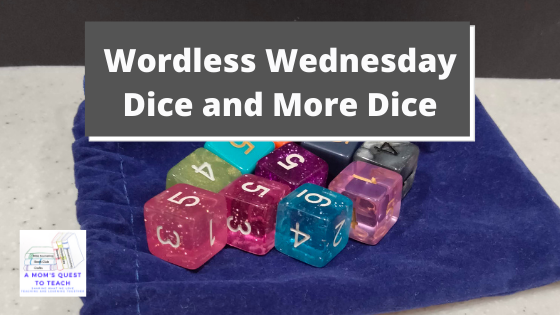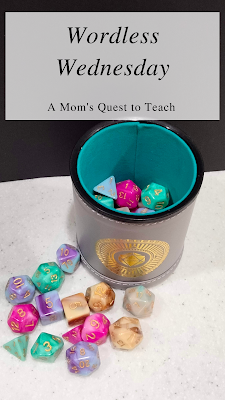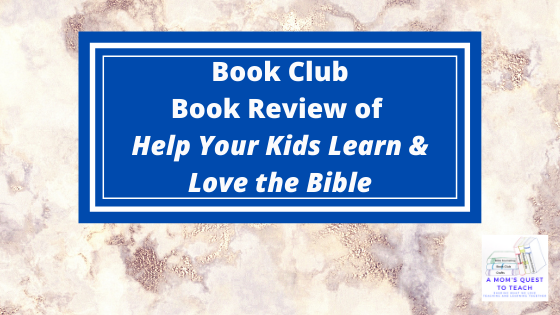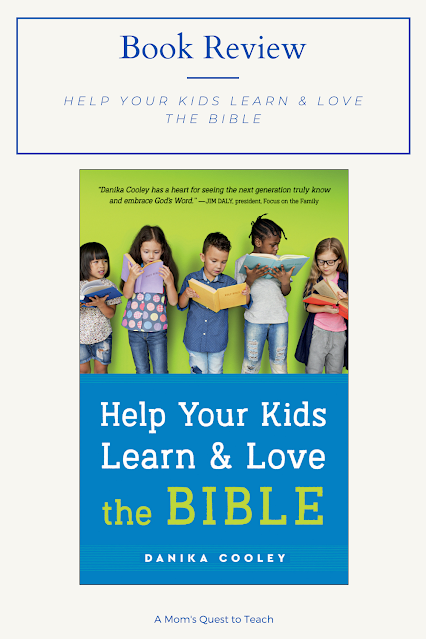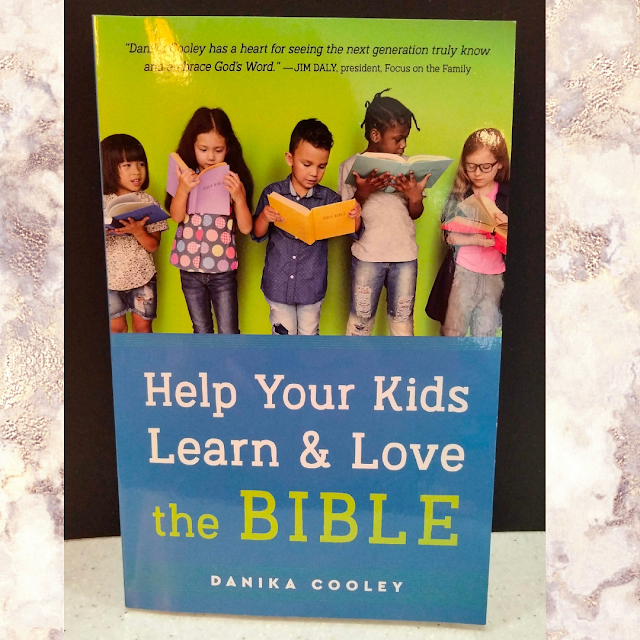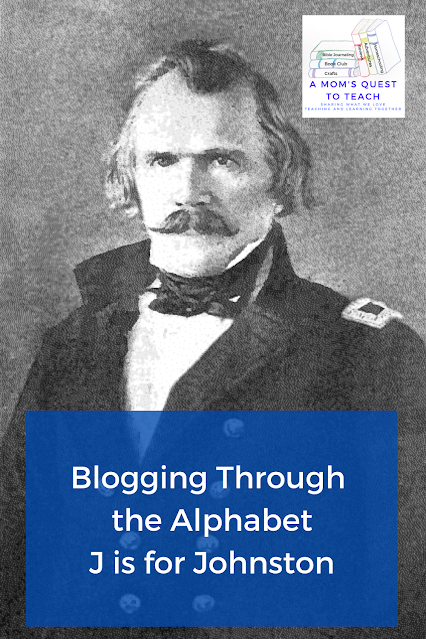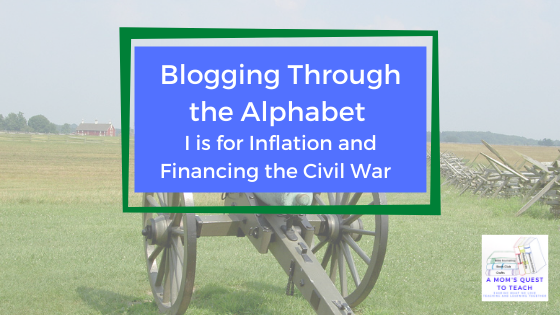A Mom's Quest to Teach is a regular column covering elements of teaching and learning (with an eye towards homeschooling), parenting, crafting, and all of the discoveries, joys, and daily roller coaster rides that occur while being a mom.
Pages
Wednesday, June 30, 2021
Saturday, June 26, 2021
Blogging Through the Alphabet: L is for Lee
A man surrounded by controversy, Robert E. Lee can spark heated conversations from historians and citizens alike. James M. McPherson summarizes who Lee was prior to the American Civil War quite well in Battle Cry of Freedom:
"Lee was fifty-four years old in 1861, the son of a Revolutionary War hero, scion of the First Families of Virginia, a gentleman in every sense of the word" (280).
Like many others, Lee made his dislike of slavery clear, but his decision to stand by Virginia led to many then and today discounting him and adding his name to the list of traitors to the United States in history. But what is the truth? Truth is very complicated when it comes to history, as there is so much evidence to wade through to find it. Today, I would like to share with you several resources to help you learn more about Robert E. Lee.
Touring the United States
An interesting book for the American Civil War enthusiast is In the Footsteps of Robert E. Lee by Clint Johnson. In this 186-page book, readers will be taken on a journey to over 60 different locations in over 10 states to learn more about Lee. Johnson writes in the preface, "Not many people in American history have had such power of personality and have attracted the kind of attention devoted to Lee" (XIV). When we examine the men of the past, we should try to immerse ourselves in their time period and not judge them by today's ever-changing standards. With In the Footsteps of Robert E. Lee, you will do just that by visiting the physical locations – some of which have not changed that much since Lee walked there in the 1800s.
Shaping History
The history of the American Civil War and the examination of the causes, people, and events started almost immediately after the surrender at Appomattox. In the 1870s and 1880s, former Confederates began collecting their memories and writing their views of events. A popular theory and interpretation grew out of these writings – The Lost Cause. Tied up in this theory is the idea that Lee outshone all the other Confederate generals and ended up having to surrender due to the overpowering Union resources.
While Lee was not the legendary man The Lost Cause portrayed him to be, the revisionist historians have swung too far in the opposite direction. In Lee and His Generals in War and Memory, Gary W. Gallagher attempts to explore arguments regarding Lee and his famous subordinates in the American Civil War. If you wish to learn more, Gallagher provides many footnotes to help you dig deeper, as well as a useful index to find out which specific topic you wish to read about.
Family
Another book I picked up many years ago is The Lee Girls by Mary P. Colling. It tells readers about the lives of the four daughters of Lee. For those who wish to know less about the military events of the mid-1800s to the early 1900s, reading about the lives of Mary Custis Lee, Anne Carter Lee, Eleanor Agnes Lee, and Mildred Childe Lee will provide an insight into the lives of a Virginian family greatly impacted by the American Civil War.
History
Even though the past is long gone, it still holds meaning and significance for us today. We should not sweep events or people that are distasteful to us or others from the pages of our books. We have the ability – with critical thinking – to learn from those who lived before us.
Tuesday, June 22, 2021
Puzzles in Our Homeschool
I received a COMPLIMENTARY copy of
this puzzle from Timberdoodle in exchange for my honest opinion. I was not
required to write a positive review, nor was I compensated in any other way.
This post contains tracking links. For more information, please see my Terms
of Use and Disclosure Policy page. Thank you.
Finding a way to make science come to life can be challenging for some homeschooling families. What happens if your child is not interested in experiments or labs? How do you get them interested in their science lessons if science is not their favorite subject? While our oldest son enjoyed some of his science lessons, it definitely was not his favorite subject of his homeschool career. In the past, we incorporated hands-on activities like growing different plants and experimenting with the soil type and such, but how could we bring anatomy to life? Enter Dr. Livingston's Anatomy Jigsaw Puzzle: The Human Thorax courtesy of Timberdoodle.
Included in both the 2021 Eleventh-Grade Curriculum Kit and Nonreligious 2021 Eleventh-Grade Curriculum Kit, The Human Thorax puzzle is 500 pieces of science education and entertainment. The puzzle shows a cross-section of the rib cage and its contents including the heart, the lungs, the trachea, and many muscles are also labeled in the lid of the puzzle box. While putting together the puzzle, you can easily see exactly where each piece fits into the puzzle and the human body.
A Unique Educational Experience
Dr. Livingston's Anatomy Jigsaw Puzzle: The Human Thorax is one of seven total puzzles that will help your high school anatomy lessons come to life. Together all seven puzzles will look like vintage medical texts sitting on your homeschool shelf. The box has a very sturdy feel and opens and closes quite nicely. I love the fact that the box for the puzzle does not have a separate lid. What a great feature!
Puzzling It Out
We started putting together the puzzle after dinner and continued through the evening. Then, we took a break with only part of the lungs left for the next morning. The pink section of the lungs was very difficult. We found a system that worked for us was to look for the shapes and then try individual pieces. While using colors and the shapes of the puzzle pieces for the border and heart was the way to go, we found we had to change our method when we were finishing up the puzzle. In all, it took us maybe four to five hours to complete the puzzle with those working on the puzzle changing a few times as one of the three of us took a break.
I firmly believe introducing puzzles into your homeschool routine is a wonderful way to bring your science lessons to life. And you will be able to complete the puzzle over and over, depending upon your time and desire to do so! Each time you complete The Human Thorax puzzle, you can discuss different parts of the puzzle or introduce new activities to go along with it. Use the puzzle to label worksheets, have animal discussions, or while reading and researching.
Looking for More From Timberdoodle?
We have had the opportunity to review several items from Timberdoodle in our homeschool. From games to puzzles, there are so many wonderful items you can purchase to incorporate into your homeschool lessons. If you need an entire kit for your 11th grader, you can purchase the 2021 Eleventh-Grade Curriculum Kit, which includes this puzzle, or you can pick and choose from the items that you need for your homeschool plans.
Thursday, June 17, 2021
Book Club: Book Review of The Heart's Charge
I received a COMPLIMENTARY copy of
this book from the publisher in exchange for my honest opinion. I was not
required to write a positive review, nor was I compensated in any other way.
This post contains affiliate links. For more information, please see my Terms
of Use and Disclosure Policy page. Thank you.
I had the pleasure of reading and reviewing At Love's Command in June 2020, which is the first book in the Hanger's Horsemen series. I was very excited to have the opportunity to read and review the second in the series, The Heart's Charge. Both stories were very inspirational and exciting to read.
Finding a Safe Place for Their Hearts
In this second book in the Hanger's Horsemen series by Karen Witemeyer, we learn more about what happened to Mark Wallace and Jonah Brooks after the events in the first book. The story opens with an exciting adventure as they come upon a woman alone needing help to deliver her first baby. Mark and Jonah are then left with the care of this infant. What exactly will they do?
The journey of Mark and Jonah takes us to a foundling home run by two independent women. One, Katherine Palmer, is already known to Mark. He had known her and actually proposed marriage to her ten years before. The second woman, Eliza Southerland, is determined that she does not need to be involved with any man and can do all the work at Harmony House with only Katherine's assistance. As you can guess, romance soon joins the tale of these four individuals.
Even with the blossoming romance between Jonah and Eliza and the rekindling of love between Mark and Katherine, there is more to this work of Christian historical fiction as two of the four Hanger's Horsemen seek to assist one young boy who says that children have been disappearing. We also see the lives of the children living at the foundling home and how Eliza and Katherine are helping them grow, learn, and love. To prevent any more of the boys who ride the rails from going missing, Mark and Jonah persuade them to stay at Harmony House. So, we see more of all the children interacting, helping each other and learning from the ladies who run the home and the men staying in its barn.
Trusting in God
At so many moments in The Heart's Charge, we see the different characters seeking God for help and either placing their trust in Him or being reminded to do so. The story was entertaining and suspenseful. Packed in between the scared Eliza riding a cavalry horse and Mark repairing Harmony House, I found many moments that reminded me that "we've all broken his (Jesus') heart with the poor choices we've made. Yet the Good Book teaches that God delights in showing mercy" (242-243). Personally, I find myself seeking God's mercy more and more every day. Seeing the reminder of God's compassion demonstrated in a wonderful work of fiction was most welcome. It is nice to read books that are both entertaining and uplifting.
I enjoyed the individual stories of Mark, Katherine, Jonah, and Eliza, all equally. It did not feel like any one character was neglected as we followed the four adults around with their daily tasks at Harmony House and in the pursuit to find evidence of who was kidnapping children. Sometimes when there are too many characters in a book, some get lost, but not in the case of The Heart's Charge.
I would recommend The Heart's Charge to those who enjoy Christian Romance, historical fiction, and an entertaining tale. It provides not only much-needed relief from the hectic world of today in a good story but is also a reminder that God can see us through even the worst moments.
Wednesday, June 16, 2021
Tuesday, June 15, 2021
Book Club: Book Review of Help Your Kids Learn & Love the Bible
I received a COMPLIMENTARY copy of
this book from the publisher in exchange for my honest opinion. I was not
required to write a positive review, nor was I compensated in any other way.
This post contains affiliate links. For more information, please see my Terms
of Use and Disclosure Policy page. Thank you.
A brand new wonderful resource available to help parents on the journey to teaching their children about the Bible has been published by Bethany House Publishers. Help Your Kids Learn & Love the Bible by Danika Cooley gives parents "the tools and confidence to study the Bible as a family." In three parts and only 199 pages, Cooley provides advice, experience, and personal stories that will help parents "initiate and strengthen your child's relationship with the Lord through His Word."
About Help Your Kids Learn & Love the Bible
Sandwiched between an introduction where readers are introduced to the idea that they are Generation Bible and a conclusion that reminds us of several real-world stories that "the whole Christian history is full of faithful parents" (184) are three parts that give you the practical advice and concrete ways in which you can help your children learn and love the Bible.
The message at the heart of Help Your Kids Learn & Love the Bible is that as a family you can read the Bible from cover to cover, no matter if you have preschoolers or high schoolers. Reading the Bible as a family can become a natural part of our day using the plan and advice of Cooley.
Part One: You're the Leader
Cooley helps put to bed the myth that the Bible is too difficult to read as a family. Our children can appreciate the Bible as we find a translation that works for our family, look at which parts we can skip for our younger children (for now), and find ways to go to God and His Word every day. And yes, there will be times when we need to adjust our plans, but that is okay.
Part Two: Faithful Reading
To help parents understand the Bible, Cooley looks at the authors of the Bible, all the "i" words - inspired, inerrant, and infallible, how the Bible is organized, and the primary themes of the Bible. I truly appreciated Cooley's reminder to look for the main themes and read the Scripture in context.
Part Three: A Daily Walk
In this final section, Danika Cooley shares how to actually help your kids learn and love the Bible. From round-robin Bible reading to concrete hands-on activities, there are so many wonderful ways shared to help parents. Songs, puppet shows, memorizing scripture, praying the Bible, and other ideas will help you make your Bible reading time come to life.
My Thoughts
I loved Help Your Kids Learn & Love the Bible. The practical advice and suggestions for teaching your children, like creating a 'bookcase' of the genres of the Bible, to the personal stories the author shared were wonderful. One of the things I liked the most about Cooley's book is the fact that she speaks of her homeschooling experience. As a homeschooling family ourselves, it was nice to read about how one mom incorporated the Bible into her family's homeschooling day.
While reading Help Your Kids Learn & Love the Bible, I had my pen ready because there were so many parts that I wanted to notate and revisit. Even though we use several different homeschooling curriculum pieces that allow us to bring the Bible into our daily lessons, I found many new ideas from Cooley's book. I want our family to work on Scripture memorization more and create more crafts with our younger children. I also want to go through the list of works consulted to find more information to help our family grow in the Word of God.
I recommend Help Your Kids Learn & Love the Bible to parents whether their children are homeschooled or attend public or private school. There is so much useful information and advice to help us set up a routine of Bible reading. Churches would also find the book helpful so they can minister to their families and help them bring their children to the Bible. I feel this book will help our children fill their hearts full of Scripture.
Saturday, June 12, 2021
Blogging Through the Alphabet: J is for Johnston
Albert Sidney Johnston was no stranger to military life before the first shot was fired upon Fort Sumter. He had fought for both Texas and the United States against Mexico, and he spent time in the West before his home state of Kentucky seceded from the Union. He has been described as tall, posing a sense of humor and quiet authority. Jefferson Davis is quoted in a book by Shelby Foote as saying that Johnston was "the greatest soldier, the ablest man, civil or military, Confederate or Federal."
Johnston was one of several generals of the Confederacy serving in the Western Theater of the American Civil War. Forts were relied upon in the West to protect the Confederacy against both land and river-borne invasions by the Union. These forts would be hotly contested. In this post, I will discuss Johnston and two forts – Fort Henry and Fort Donelson.
 |
| Fort Donelson |
Fort Henry
As one of the weakest points in Johnston's long defensive line in the West, Fort Henry was attacked on February 6, 1862, by Brigadier General Ulysses S. Grant and Flag Officer Andrew H. Foote. While the Confederates put up a fight against the Union gunboats in the river, they eventually surrendered. After this capture, Grant said he would capture Fort Donelson on February 8th. With the coming bad weather, an attack on Fort Donelson had to be postponed, but Grant's men were still in a position that separated Johnston's men.
What to Do Next?
Johnston really had two options available to him. He could concentrate all his men (about 35,000) at Fort Donelson and maybe counterattack to get Fort Henry back into Confederate hands, or he could give up Kentucky and focus on the defense of the factories and depots in Nashville. So, would Johnston try to defend Fort Donelson on the Cumberland River and perhaps get Fort Henry back (situated on the Tennessee River), or would he retreat to save the men for another day?
Albert Sidney Johnston preferred to retreat to the Nashville-Memphis line and leave only a small fighting force at Fort Donelson. This would save the Confederates under this command to fight another day. This was a very good plan, but he abandoned it. He decided to make a real fight at Fort Donelson, but he only kept 12,000 of the Confederate soldiers at the Fort. The rest retreated to Nashville. And John Floyd was appointed to defend Fort Donelson (just so you know, General John Floyd was sent to the west after he had problems in Western Virginia).
 |
| graphic from wpclipart.com |
Fort Donelson
What picture comes to mind when you hear the word "fort?" Personally, I think about a well-defended military position with solid walls surrounding barracks, common areas, storage areas, and more. Fort Donelson was actually just a stockade of around 15 acres of soldiers' huts and equipment sheds. There were two batteries of 12 heavy guns dug into the side of a 100-foot bluff on the Cumberland River to stop attacks by water. Add in three miles of trenches to repeal land attacks, and the fort was pretty well defended, if not a stereotypical fort.
Attacks on Fort Donelson
On February 13, 1862, the Union sent several probing attacks. By February 14, there were about 25,000 Union soldiers, ten ironclads, and two wooden gunboats in positions to attack Fort Donelson. The Ironclads fired upon Fort Donelson but moved in too close and ended up overshooting their targets. This miscalculation allowed the Confederates to heavily damage the ironclads. The shots from the Confederate heavy guns would smash through the decks of some of the ships. There were 54 sailors dead or wounded, including an injury to Foote, and no Confederates lost in this part of the battle.
Early Celebration and Potential Defeat
The Confederates celebrated the withdrawal of the ironclads, but there was really no cause for celebration. The Union soldiers still surrounded the Confederates. During the night of February 14, after the Confederate generals discussed what to do, they moved Confederate troops to the left side. At dawn the next day, the Confederates attacked.
The Confederates were breaking out on the morning of February 15, and Grant was caught unaware. He ordered his men to sit tight, and the Union Generals met the force of the Confederates and ended up retreating. One would think the Confederates would keep pushing ahead, right? No, a Tennessee politician, Gideon Pillow, persuaded General Floyd to move the Confederates back to the trenches, effectively losing any territory they had gained from the Union. So, of course, the Union regrouped and regained the ground they had lost during the morning.
Night into Day
During the evening of February 15, there were almost 1,000 Union and Confederate soldiers dead, with about 3,000 wounded. The cold continued to creep in while the Confederate leaders discussed what action to take. It was decided to surrender the Fort, but General Floyd and Gideon Pillow would leave and force now-General Simon Bolivar Buckner to handle the actual surrender of Fort Donelson. On February 16, 1862, Buckner surrendered Fort Donelson with approximately 12,000 to 13,000 men to General Grant.
Results
This surrender would propel Grant towards becoming a household name. Lincoln promoted him to Major General after this Union victory. And the consequences for Johnston's forces in the Western Theater would be devastating. About 1/3 of his force were out of action, and the rest were split, with about 200 miles separating them. He then had to evacuate Nashville on February 23, 1862, which meant that the Confederates lost control of their first state capital and a huge industrial center.
Johnston was heavily criticized after the losses of Fort Henry and Fort Donelson. He was charged with drunkenness and incompetence, but Jefferson Davis stood by him while Johnston ignored the critics. Albert Sidney Johnston wouldn't have time to prove himself an effectual general, as he was wounded at the Battle of Shiloh on April 6, 1862 and died on the battlefield.
Images from wpclipart.com and ushistoryimages.com
Wednesday, June 9, 2021
Wordless Wednesday: Project Time
Saturday, June 5, 2021
Blogging Through the Alphabet: I is for Inflation and Financing the Civil War
War is often at the mercy of money. The splitting of the United States during the American Civil War led to the two sides facing a variety of problems. The Confederacy's capital was tied up in land, slaves, and planters in debt. And while the Northern economy had fewer problems, they pretty much came to a halt in 1861 as there was a panic that caused a run on banks.
The South
There was no tradition of paying taxes in the South as there were not a lot of pre-Civil War taxes. Even though taxation would be the least inflationary method, it was also the least appealing way to Southerners to raise money to pay for the War. Although a direct tax on property became law, few Southern states actually paid the money to the Confederate government.
One of the ways how the Confederacy financed the Civil War was by printing notes. There were large quantities of paper dollars in circulation. As soon as the paper dollars were printed, their value dropped. There were also counterfeit notes printed in abundance in the South. The funny thing is some could be identified as counterfeit because of the superior printing quality.
The victories in the South led to confidence in the economy, but the continual printing of new notes led to problems. By 1863, it would take $7.00 to buy what it only took $1.00 to buy two years earlier. Who was most impacted by inflation? The poor were those who were most impacted by this inflation, and the divisions between classes widened in the South.
North
Two of the economic advantages the North had during the American Civil War were an established Treasury and revenue from tariffs, but there were problems. When Abraham Lincoln became president in 1861, the United States had the highest national debt in forty years. His Secretary of the Treasury, Salmon P. Chase, set forth to make changes that would help the North finance the war.
The idea of war bonds is something that is commonly associated with World War II. But during the American Civil War, they would also be sold, and (different from other war bonds sold in America's past), they would be sold to ordinary people, not just corporations. There were several different types of war bonds issued during the Civil War. (Read more here: Museum of American Finance.)
Another thing that is very common today was collected during the Civil War for the first time in American history. On August 5, 1861, the first federal income tax was collected, but most wage earners were exempt from it. Only those earning more than $800 would pay the 3% tax. Lincoln's tax law was repealed by Congress in 1871, but the system in use today would come with the 16th Amendment.
Many of the other ways in which the North would raise funds for the war effort are still in place today or, at least, in similar ways. For example, the Internal Revenue Act of 1862 was passed to help raise more funds for the American Civil War. The Act placed taxes on various luxury items and taxes on other things in the North, such as:
- Playing cards
- Carriages
- Jewelry
- Billiard tables
- Stamp Taxes
- Inheritance Taxes
- Income Tax
- License tax on professions
